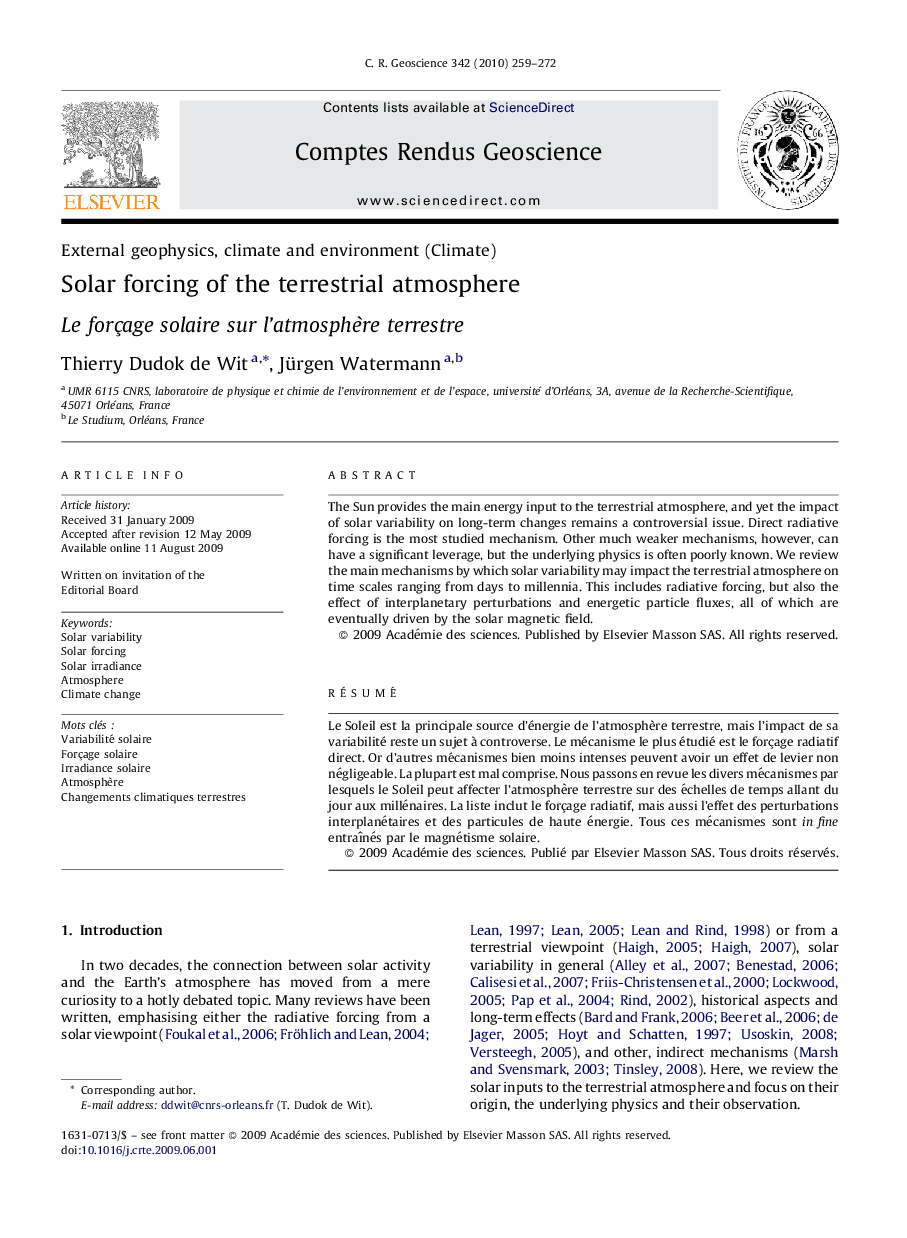| Article ID | Journal | Published Year | Pages | File Type |
|---|---|---|---|---|
| 4462540 | Comptes Rendus Geoscience | 2010 | 14 Pages |
The Sun provides the main energy input to the terrestrial atmosphere, and yet the impact of solar variability on long-term changes remains a controversial issue. Direct radiative forcing is the most studied mechanism. Other much weaker mechanisms, however, can have a significant leverage, but the underlying physics is often poorly known. We review the main mechanisms by which solar variability may impact the terrestrial atmosphere on time scales ranging from days to millennia. This includes radiative forcing, but also the effect of interplanetary perturbations and energetic particle fluxes, all of which are eventually driven by the solar magnetic field.
RésuméLe Soleil est la principale source d’énergie de l’atmosphère terrestre, mais l’impact de sa variabilité reste un sujet à controverse. Le mécanisme le plus étudié est le forçage radiatif direct. Or d’autres mécanismes bien moins intenses peuvent avoir un effet de levier non négligeable. La plupart est mal comprise. Nous passons en revue les divers mécanismes par lesquels le Soleil peut affecter l’atmosphère terrestre sur des échelles de temps allant du jour aux millénaires. La liste inclut le forçage radiatif, mais aussi l’effet des perturbations interplanétaires et des particules de haute énergie. Tous ces mécanismes sont in fine entraînés par le magnétisme solaire.
